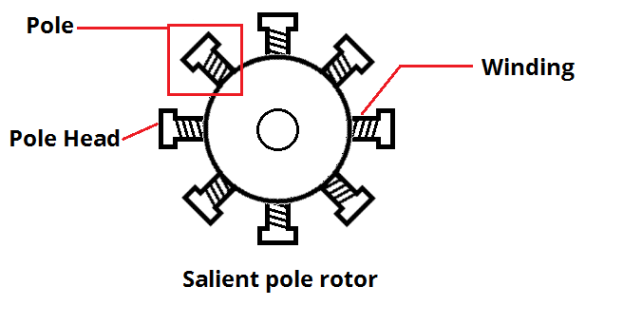|
Singly-fed Electric Machine
Singly fed electric machine is a broad term which covers ordinary electric motors and electric generators. Such machines have only one external connection to the windings, and thus are said to be ''singly fed''. See also * Doubly fed electric machine *Rotary converter A rotary converter is a type of electrical machine which acts as a mechanical rectifier, Power inverter, inverter or frequency converter. Rotary converters were used to convert alternating current (AC) to direct current (DC), or DC to AC power, ... References Electric motors Electrical generators {{electric-stub ... [...More Info...] [...Related Items...] OR: [Wikipedia] [Google] [Baidu] |
Electric Motor
An electric motor is a machine that converts electrical energy into mechanical energy. Most electric motors operate through the interaction between the motor's magnetic field and electric current in a electromagnetic coil, wire winding to generate Laplace force in the form of torque applied on the motor's shaft. An electric generator is mechanically identical to an electric motor, but operates in reverse, converting mechanical energy into electrical energy. Electric motors can be powered by direct current (DC) sources, such as from batteries or rectifiers, or by alternating current (AC) sources, such as a power grid, Inverter (electrical), inverters or electrical generators. Electric motors may also be classified by considerations such as power source type, construction, application and type of motion output. They can be brushed motor, brushed or brushless motor, brushless, single-phase electric power, single-phase, two-phase electric power, two-phase, or three-phase electric p ... [...More Info...] [...Related Items...] OR: [Wikipedia] [Google] [Baidu] |
Electric Generator
In electricity generation, a generator, also called an ''electric generator'', ''electrical generator'', and ''electromagnetic generator'' is an electromechanical device that converts mechanical energy to electrical energy for use in an external circuit. In most generators which are rotating machines, a source of kinetic power rotates the generator's shaft, and the generator produces an electric current at its output terminals which flows through an external circuit, powering electrical loads. Sources of mechanical energy used to drive generators include steam turbines, gas turbines, water turbines, internal combustion engines, wind turbines and even hand cranks. Generators produce nearly all of the electric power for worldwide electric power grids. The first electromagnetic generator, the Faraday disk, was invented in 1831 by British scientist Michael Faraday. The reverse conversion of electrical energy into mechanical energy is done by an electric motor, and motors and ... [...More Info...] [...Related Items...] OR: [Wikipedia] [Google] [Baidu] |
Doubly Fed Electric Machine
Doubly fed electric machines, Doubly fed induction generator (DFIG), or slip-ring generators, are electric motors or electric generators, where both the field magnet windings and armature windings are separately connected to equipment outside the machine. By feeding adjustable frequency AC power to the field windings, the magnetic field can be made to rotate, allowing variation in motor or generator speed. This is useful, for instance, for generators used in wind turbines. Additionally, DFIG-based wind turbines offer the ability to control active and reactive power. Introduction Doubly fed electrical generators are similar to AC electrical generators, but have additional features which allow them to run at speeds slightly above or below their natural synchronous speed. This is useful for large variable speed wind turbines, because wind speed can change suddenly. When a gust of wind hits a wind turbine, the blades try to speed up, but a synchronous generator is locked to ... [...More Info...] [...Related Items...] OR: [Wikipedia] [Google] [Baidu] |
Rotary Converter
A rotary converter is a type of electrical machine which acts as a mechanical rectifier, Power inverter, inverter or frequency converter. Rotary converters were used to convert alternating current (AC) to direct current (DC), or DC to AC power, before the advent of chemical or Solid state (electronics), solid state power rectification and inverting. They were commonly used to provide DC power for commercial, industrial and railway electrification from an AC power source. Principles of operation The rotary converter can be thought of as a motor–generator, where the two machines share a single rotating armature (electrical engineering), armature and set of field coils. The basic construction of the rotary converter consists of a DC generator (dynamo) with a set of slip rings tapped into its rotor windings at evenly spaced intervals. When a dynamo is spun the electric currents in its rotor windings alternate as it rotates in the magnetic field of the stationary field windin ... [...More Info...] [...Related Items...] OR: [Wikipedia] [Google] [Baidu] |
Electric Motors
An electric motor is a machine that converts electrical energy into mechanical energy. Most electric motors operate through the interaction between the motor's magnetic field and electric current in a wire winding to generate Laplace force in the form of torque applied on the motor's shaft. An electric generator is mechanically identical to an electric motor, but operates in reverse, converting mechanical energy into electrical energy. Electric motors can be powered by direct current (DC) sources, such as from batteries or rectifiers, or by alternating current (AC) sources, such as a power grid, inverters or electrical generators. Electric motors may also be classified by considerations such as power source type, construction, application and type of motion output. They can be brushed or brushless, single-phase, two-phase, or three-phase, axial or radial flux, and may be air-cooled or liquid-cooled. Standardized electric motors provide power for industrial use. The ... [...More Info...] [...Related Items...] OR: [Wikipedia] [Google] [Baidu] |

